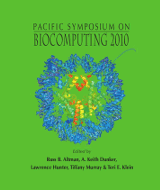Loss of Post-Translational Modification Sites in Disease
Shuyan Li1,2, Lilia M. Iakoucheva3, Sean D. Mooney4, Predrag Radivojac1
1School of Informatics and Computing, Indiana University, Bloomington, IN 47408, USA; 2College of Chemistry and Chemical Engineering, Lanzhou University, Lanzhou, Gansu 730000, China; 3Laboratory of Statistical Genetics, The Rockefeller University, New York, NY 10065, USA; 4Buck Institute for Age Research, Novato, CA 94945, USA;
Email: predrag@indiana.edu
Pacific Symposium on Biocomputing 15:337-347(2010)

Abstract
Understanding and predicting molecular cause of disease is one of the major challenges for biology and medicine. One particular area of interest continues to be computational analyses of disease-associated amino acid substitutions. To this end, various studies have been performed to identify molecular functions disrupted by disease-causing mutations. Here, we investigate the influence of disease- associated mutations on post-translational modifications. In particular, we study the loss of modification target sites as a consequence of disease mutation. We find that about 5% of disease-associated mutations may affect known modification sites, either partially (4%) of fully (1%), compared to about 2% of putatively neutral polymorphisms. Most of the fifteen post-translational modification types analyzed were found to be disrupted at levels higher than expected by chance. Molecular functions and physiochemical properties at sites of disease mutation were also compared to those of neutral polymorphisms involved in the process of post-translational modification site disruption. Disease-associated mutations in the neighborhood of post-translationally modified sites were found to be enriched in mutations that change polarity, charge, and hydrophobicity of the wild-type amino acids. Overall, these results further suggest that disruption of modification sites is an important but not the major cause of human genetic disease.
[Full-Text PDF] [PSB Home Page]